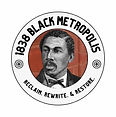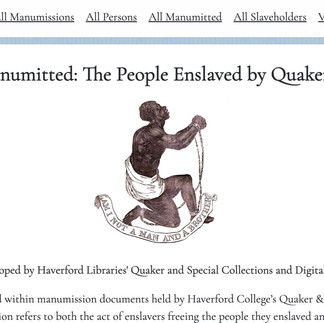The Black Metropolis has Always Celebrated Emancipation
- 1838 Black Metropolis
- Jun 12, 2023
- 3 min read
As we head into Juneteenth season (and Lordt there is SO MUCH GOING ON) we are reflecting on the fact that The Black Metropolis was well aware of emancipation efforts worldwide in the 1830s and 1840s and celebrated emancipation in much the same way we do now, with parades, parties, jubilees and festivals.
1776 - The First Emancipation
We like to think that the very first emancipation in this country happened in 1776. Not with the Declaration of Independence, but with the decision made by the Quakers at their Yearly Meeting in Pennsylvania to end enslavement in their ranks. The Quakers voted to expel any member who still held enslaved people. And that turned into a massive freeing of thousands of people.

Freeing an enslaved person was called 'manumission'. It was a legal act and required legal papers. Manumission papers were necessary to get 'Freedom Papers' which were essentially passes to prove that you were free. You may have heard the word 'Freedom Papers' in movies. You can read manumission papers on this Haverford site. Or go visit the Historial Society of Pennsylvania and read the manumission books. Or read the archives at the Black Genealogy site of the Friends Historical Library.
This great emancipation was the beginning of The Black Metropolis. It was a monumental event that led to the establishment of a free Black community in the Philadelphia region. This community was able to organize into a stable civilization that provided sanctuary and served as a foundation for educational, political, religious, and social institution building.
So from the beginning of the United States - 1776 carried a different weight, a different meaning to Black people in Philadelphia.
1/1/1804 - Haitian Independence
Philadelphia felt the impact of Haitian independence for over 10 years, from the start of heavy fighting to the liberation from colonization on January 1, 1804. Haitian emigrees, which included enslaved Black people, free mulatto people and refugee white plantation owners, flocked to Philadelphia. Over 800 Black people from Haiti merged into the Black Metropolis during that time.

I don't know of any sources describing the celebration of Haitian Independence day in Philadelphia (but they are probably out there), but the awareness that a Black nation had defeated Napoleon, the English and the Spanish certainly coursed through the networks of the Black Metropolis with the personal experience still fresh in the minds of 800 new inhabitants. This may be why some in the Black Metropolis were influenced and experimented with moving to Haiti.
8/1/1834 - West Indian Emancipation Day
"On 1 August 1834, 750,000 slaves in the British West Indies formally became free." (UK Parliament)
This is really when visible and outward celebration began.
Jefferey R Kerr-Ritchie researched the number of West Indian Emancipation Day Celebrations in Black churches between 1834 and 1842 and found over 30 celebrations. These celebrations were usually programs with speakers, prayers and songs. And maybe dinner.

For example, the female Literary Association met at St. Thomas Episcopal Church at the corner of 5th and Walnut here in Philly, where they "read chapters, listened to addresses, and dined on bread and water." (Kerr-Ritchie, 88).
But between 1837 and 1861 Kerr says that there were so many August 1 celebration references in newspapers that they "defied numerical count." (Kerr-Ritchie, 92). The celebrations in the middle of the 19th Century became less about churches and more about politics. They were big events, with parades and uniforms and regalia. Most importantly they became about the abolition of slavery.
"August First was an important site for political mobilization whose primary objective in linking emancipation with enslavement was both the celebration of the former together with the overthrow of the latter." (Kerr-Ritchie, 83)
On August 1, 1842 the Black Metropolis organized one of those big, regalia filled Emancipation day parades. Organized by the Young Men's Vigilant Association, the parade had over 1000 people. As the parade marched past 5th and South it was violently attacked by white mobs. This turned into three days of destruction and mayhem that was so severe that it shook the foundations of the Black Metropolis to its core. By the end of the three days, the Second African Presbyterian Church, Benezet Hall and a number of homes were destroyed. 1,000 militia had to be called in to stop the attackers.
Celebration Energy Revived
The Black Metropolis celebrated emancipation as early 1838, with the same types of things we are doing today; programs, talks, parades, festivals, music, dinners. Even though there were times when celebrations didn't occur, the spirit to love and celebrate very hard won freedoms exists in collective memory and is being refreshed with much love and energy this year.













